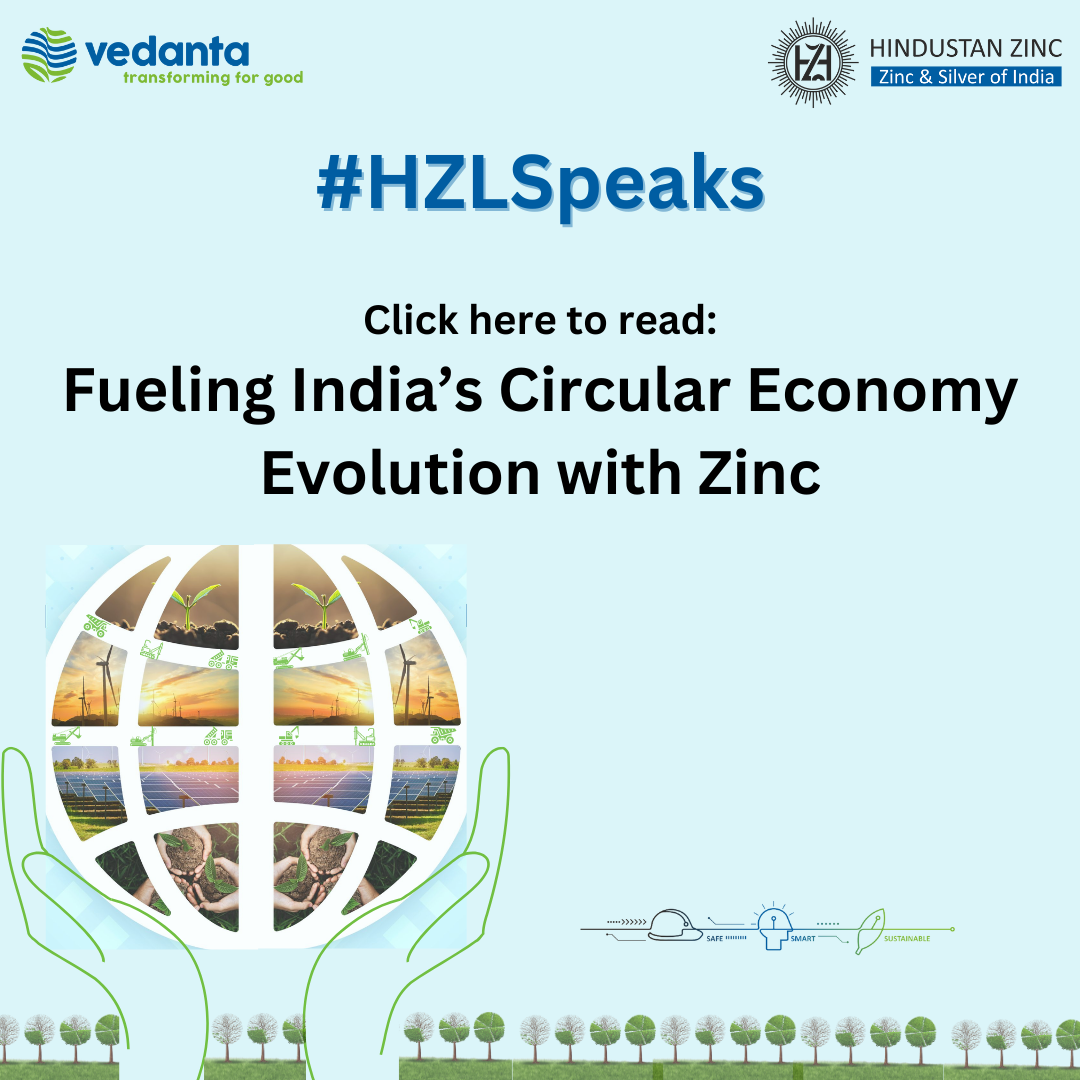
Dear Readers,
Welcome to another insightful edition of Hindustan Zinc’s #HZLSpeaks series, where we embark on a journey to explore the pivotal role of zinc in shaping India’s circular economy.
In today’s rapidly evolving global landscape, the concept of a circular economy has gained significant traction, advocating for a shift from the traditional linear model of “take-make-dispose” towards sustainability and resource efficiency. Endorsed by Ellen MacArthur Foundation, this approach emphasizes designing out waste and promoting the continuous use of resources within closed loops, thereby minimizing environmental impact, and fostering economic resilience.
India, with its burgeoning economy and population, stands at the forefront of this transition, facing pressing challenges related to resource depletion and environmental degradation. Embracing a circular economy framework not only offers a viable solution to mitigate these challenges but also presents an opportunity for India to leapfrog towards sustainable development.
At the core of this transition lies zinc, a versatile and indispensable metal that fuels various industries, including construction, automotive, and agriculture. Zinc’s journey within the circular economy begins with its efficient extraction from ores and extends to its utilization in diverse applications, from galvanized steel structures to zinc-infused fertilizers.
One of zinc’s key attributes that align seamlessly with circular economy principles is its recyclability. Zinc-based products, renowned for their durability and longevity, boast high collection and end-of-life recycling rates, ensuring prolonged presence within the materials loop. Moreover, zinc’s role extends beyond traditional industrial applications, encompassing its significance in agriculture. When used as a fertilizer, zinc transitions from the technical cycle to the biological cycle, contributing to soil health and crop productivity. This integration exemplifies the circularity inherent in zinc’s lifecycle, where waste is minimized, and resources are utilized efficiently. Additionally, zinc serves as a facilitator of multi-metal cycles, crucial for the circular economy ecosystem. India’s journey towards a circular economy also aligns with its commitment to achieving the United Nations Sustainable Development Goals.
As India embarks on this transformative journey, zinc emerges as a cornerstone of innovation and resilience. By harnessing zinc’s versatility, promoting resource efficiency, and fostering collaboration across sectors, India can accelerate its transition towards a more sustainable and prosperous future.
Join us as the #HZLSpeaks series continues to unravel the multifaceted contributions of zinc. Together, let’s embrace zinc’s potential as a catalyst for change and chart a path towards circularity, where economic prosperity coexists harmoniously with environmental preservation. Stay tuned for more engaging discussions on zinc’s role in shaping a sustainable future.






